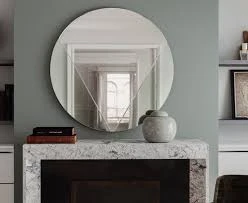

Understanding the Different Types of Float Glass
Float glass is a widely used material in the construction and manufacturing industries, known for its superior quality and versatility. Produced through a process that involves floating molten glass on top of molten tin, float glass has a smooth, even surface that is free from distortions. This unique manufacturing technique allows for the production of large sheets of glass that can be cut and processed for various applications.
Float glass can be categorized into several types based on its properties, applications, and the processes used in its production. This article aims to explore the most common types of float glass, their characteristics, and their uses.
1. Clear Float Glass
Clear float glass is the most basic and commonly used type of float glass. It is characterized by its transparency and is available in various thicknesses. Commonly utilized in windows, doors, and display cases, clear float glass allows maximum light transmission while providing a clear view. Its simple composition makes it an economical choice for many applications, but it is not particularly energy-efficient.
2. Low-E Float Glass
Low-emissivity (Low-E) float glass is a specialized type of float glass designed to minimize the amount of infrared and ultraviolet light that can pass through it without compromising the amount of visible light that is transmitted. Low-E coatings are often applied to one side of the glass during production, providing an energy-efficient option for buildings. This type of glass is particularly beneficial in windows, as it helps in maintaining indoor temperature, reducing heating and cooling costs, and protecting furnishings from harmful UV rays.
3. Laminated Float Glass
Laminated float glass is created by sandwiching a layer of polyvinyl butyral (PVB) or ethylene-vinyl acetate (EVA) between two sheets of float glass. This type of glass is often used in applications where safety and security are paramount, such as in skylights, glass doors, and automobile windshields. The laminated layer holds the glass together if shattered, reducing the risk of injury from flying shards and providing enhanced sound insulation.
4
. Tempered Float Glass
Tempered float glass, also referred to as toughened glass, is treated with a thermal process that increases its strength. This type of glass can withstand greater temperatures and impact forces compared to regular float glass. When broken, tempered glass shatters into small, blunt pieces that are less likely to cause injury. It is ideal for use in shower doors, table tops, and facades, where safety and durability are crucial.
5. Reflective Float Glass
Reflective float glass is manufactured with a reflective coating that reduces glare and enhances privacy while still allowing light to pass through. This type of glass is commonly used in commercial buildings, skyscrapers, and automotive applications where a balance between aesthetics and functionality is essential. Reflective glass not only improves energy efficiency by reducing heat gain but also adds a sleek, modern look to structures.
6. Frosted Float Glass
Frosted float glass features a translucent finish that diffuses light while providing privacy. This type of glass is commonly used in interior applications, such as bathroom windows, office partitions, and shower enclosures. The frosted surface can be created through sandblasting or acid etching, allowing for a range of designs and patterns.
7. Color Float Glass
Color float glass is produced by adding metal oxides to molten glass during manufacturing, resulting in colored sheets. This type of glass is available in a variety of shades and can be used for decorative purposes, stained glass projects, or architectural features. Color float glass can be used in windows, facades, and art installations, adding vibrancy and character to any design.
Conclusion
Float glass is a versatile material that plays a significant role in modern architecture and design. Its various types, including clear, low-E, laminated, tempered, reflective, frosted, and colored float glass, cater to a wide range of applications, from safety to aesthetics. Understanding the unique properties and uses of each type can help consumers and professionals make informed decisions based on their specific needs. As technology advances, we can expect further innovations in float glass, expanding its applications and enhancing its performance in buildings and beyond.